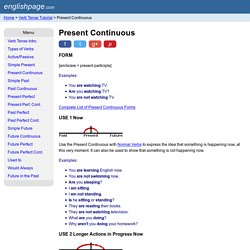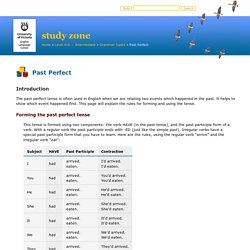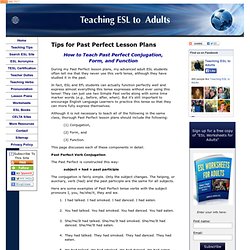

Present Continuous. [am/is/are + present participle] Examples: You are watching TV.

Are you watching TV? You are not watching TV. Complete List of Present Continuous Forms USE 1 Now Use the Present Continuous with Normal Verbs to express the idea that something is happening now, at this very moment. You are learning English now. USE 2 Longer Actions in Progress Now In English, "now" can mean: this second, today, this month, this year, this century, and so on. Examples: (All of these sentences can be said while eating dinner in a restaurant.) I am studying to become a doctor. USE 3 Near Future Sometimes, speakers use the Present Continuous to indicate that something will or will not happen in the near future. I am meeting some friends after work. USE 4 Repetition and Irritation with "Always" The Present Continuous with words such as "always" or "constantly" expresses the idea that something irritating or shocking often happens.
She is always coming to class late. REMEMBER Non-Continuous Verbs/ Mixed Verbs. Learn English - Fully Conjugated English Verbs - BIG English Verb list - English Verb Chart. English.
Verbs (English/Spanish) PICTURE DICTIONARY. Regular Verbs in English with Spanish Translation H-N - Learn and Practice English. List of Verbs. My Yahoo! Free English lessons and ESL software for teachers and students. Vocabulary. Verbs. CET - ESL Activities Online - Flashed ESL. OWL. TOEFL. English Tests. 410 Grammar: Forming and Using the Past Perfect Tense. The past perfect tense is often used in English when we are relating two events which happened in the past.

It helps to show which event happened first. This page will explain the rules for forming and using the tense. Forming the past perfect tense This tense is formed using two components: the verb HAVE (in the past tense), and the past participle form of a verb. With a regular verb the past participle ends with -ED (just like the simple past). Using the Past Perfect The past perfect is used to show you which of two events happened first. Here, we don't know which order the events happened in. Here, we know that the discussion took place first — even though the sentence describing it comes afterwards. Here is another example: When you are sure that you understand the lesson, you can continue with the exercises. ESL Past Perfect Lesson Plans. How to Teach Past Perfect Conjugation,Form, and Function During my Past Perfect lesson plans, my advanced adult ESL students often tell me that they never use this verb tense, although they have studied it in the past.

In fact, ESL and EFL students can actually function perfectly well and express almost everything this tense expresses without ever using this tense! They can just use two Simple Past verbs along with some time marker words (e.g., before, after, when). But it's still important to encourage English Language Learners to practice this tense so that they can more fully express themselves.
Although it is not necessary to teach all of the following in the same class, thorough Past Perfect lesson plans should include the following: (1) Conjugation, (2) Form, and (3) Function. This page discusses each of these components in detail. SAT words (page 1)